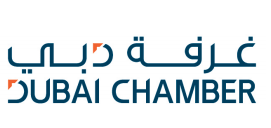What Are the Major Components of Structured Cabling?
Be it a big business or a small one, every business depends on smooth data transfer and networking to perform efficiently. The main source of data and networking is cabling, which must be properly organized to improve functionality and prevent any safety risks.
Have you ever noticed cables laid all over the floor in your office? This not only looks unpleasant to the eyes but can also pose a risk to the safety of employees working on the office premises. To ensure the safety of the employees and avoid any data transfer and networking errors, structured cabling solutions become important for businesses.
Now that we know the significance of structured cabling for businesses, let us see what the main elements of structured cabling are and how you can find the best structured cabling solutions in Dubai.
What Makes Structured Cabling So Essential?
Due to its productive properties, structured cabling has gained widespread appeal, and organizations have gained several benefits, such as:
- The installation procedure has been simplified.
- The cable system can be laid out and set up quickly and affordably.
- It is possible to link a wide range of telecommunications equipment, data solutions, and voice systems.
- Equipment, components, and parts that are standardized, including cables and connections.
- With structured cabling, we can identify and correct defects quickly and effectively.
6 Elements of Structured Cabling
When we talk about the components of structured cabling, there are mainly six subsystems of structured cabling that are mentioned below.
- Entrance Facilities
- Equipment Room
- Backbone Cabling
- Telecommunications Room
- Horizontal Cabling
- Work Area
Entrance Facilities
Whether coming from a private network or a local service carrier, telecom facilities entering a building from the outside use a conduit to pass through an opening in the exterior wall. This cabling enters a room where various devices such as network connection points, patch panels, equipment racks, hardware connectors, power supplies, and lightning protection devices are installed.
Equipment Room
The equipment room is where the entry cabling links to the interior building electrical system. It has patch panels that link backbone cable, horizontal cabling, and intermediate cabling. This room needs to be properly regulated to ensure that temperature and relative humidity levels meet the requirements of the equipment vendor because it may also connect network switches, PBXs, servers, and other devices.
Backbone Cabling
Vertical cabling, also known as backbone cabling, connects telecommunications rooms, equipment rooms, and entry facilities. It serves as the “backbone” that links various components of a building or campus. To ensure high-speed data transfer, this component is often made up of high-capacity cables such as fiber optic or high-grade copper cables.
Telecommunication Rooms
This environmentally controlled area may be a separate room (TE) or a component of a larger room (TR), such as a general utility room. These areas’ hardware terminates horizontal and backbone cables. Local cables, known as jumpers or patch cords, are also utilized on patch panels to cross-connect multiple connections. To provide extra connection resources, ICs or MCs may be inserted here as well.
Horizontal Cabling
Horizontal cabling refers to the wiring and cabling that link telecommunications rooms to individual outlets or workstations in a building or campus. It contains the wires that connect the patch panel in the telecommunications room to the user’s desk outlets. To allow high-speed data transmission, horizontal cabling often employs Category 6 (Cat6) or higher cables.
Work Area
Work Area subsystems link the end user’s workstation equipment, such as computers, phones, copiers, and other devices, to the telecommunications connection, which is the result of the horizontal cabling subsystem. Outlet and patch cables, as well as PC adapters, fiber, and other cables, are all part of the work area. Workstation equipment is frequently considered a component of this subsystem.
How to Find the Best Structured Cabling Solutions in Dubai
Absolutely! Finding the best structured cabling in Dubai is like choosing the right puzzle pieces for a smooth-running network. Here’s a simple guide to help you:
Ask for Recommendations: Talk to organizations with well managed wiring and cabling in their offices, there are chances that they know a provider for structured cabling. They can suggest reliable companies.
Check Online Reviews: Look up companies on the internet and read what other customers have said about them. Good reviews usually mean good service.
Look for Experience: Find companies that have been doing structured cabling for a while. More experience often means better quality work.
Ask Questions: Don’t be afraid to ask the company about their past projects, the types of structured cabling they do, and if they follow industry standards.
Get Multiple Quotes: Talk to a few different companies and ask them for a quote. This will help you compare prices and services.
Visit Their Website: A professional website can tell you a lot about a company. Look for clear information about their services and experience.
Check Certifications: Make sure the company is certified. This means they’ve been officially recognized for their expertise in structured cabling.
Ask for References: Don’t hesitate to ask for references from past clients. They can give you insights into what it’s like to work with the company.
Keep in mind that it’s essential for businesses to invest in structured cabling solutions, not only because it will smooth the work flow but also because it is the company’s responsibility to ensure the safety of their employees—in fact, everyone present inside the premises.
For structured cabling systems and solutions in Dubai, you can reach out to us on Email:- sales@gntme.com or message us on WhatsApp:- +971585811786.
The Importance of Structured Cabling in Business
Are you a business owner? Then you know how important your company’s IT infrastructure is and how important it is to keep it running smoothly. This is where structured data cabling comes in. Structured data cabling is like that hardworking employee who takes care of your work with full integrity. So let us see how this structured cabling helps your business and impacts the everyday operations of your company.
What is Structured Cabling?
Let us clarify what structured cabling is all about before we get into the importance of it for businesses. Structured cabling, to put it simply, is the complex network of wires and connectors that acts as the basis for your company’s communication and data transfer infrastructure. You can think of it as the invisible conductor who makes sure all of your phones, computers, and other devices can connect to each other without any problems.
It Is the Heart of Your Company
You can think of structured data cabling as the heart of your company. It plays a huge role in the smooth circulation of information and data from one place to another. If anything obstructs this flow or there is a weak link in this network, it can have a severe effect on the health of your company, and there will be negative consequences, just like any problem in blood circulation would affect your body. This is how important the role of structured data cabling is in your company.
Now let’s see what it does to make sure your company runs in the best of health.
Reliability
When any business owner hears the word “downtime” in the professional industry, it shakes their world. The key to maintaining the dependability and continuity of your operations is structured cabling. Your company can avoid the bad effects of network outages and downtime with properly designed and installed structured cabling, keeping your employees productive and your customers happy.
Scalability
Every company wants to expand. Scalability is a common goal for all businesses, whether they are startups or well-established companies. Structured data cabling is designed to expand your company without the need for regular upgrades. It gives you the freedom to expand your network, add new devices, and easily keep up with technical changes. Your company will remain quick to react to shifting market dynamics because of this flexibility.
Efficiency at a Low Cost
In business, efficiency and cost-effectiveness are essential. Structured cabling helps with both of these. As the complexity of your network infrastructure is reduced, it reduces the demand for ongoing maintenance and troubleshooting. By doing this, you not only save money but also give your IT team more time to work on more important projects rather than solving network problems. This results in increased output.
Better Communication
Nowadays, communication is everything. The bandwidth and dependability needed for clear and uninterrupted communication are provided by structured cabling services. A well-structured cabling system makes sure that your communication channels are open and effective, promoting teamwork and innovation within your company, be it through voice calls, video conferences, or data sharing.
Better Data Security
Cyberattacks and data breaches are a major threat to companies nowadays. Structured data cabling can be very helpful in enhancing network security. You can more successfully set up security measures like firewalls, intrusion detection systems, and encryption protocols with the right cabling infrastructure. This safeguards not only the confidentiality of your private information but also the confidence of your clients.
Easy Maintenance
The last thing a company wants to do is spend their valuable time and money on ongoing repairs and maintenance. The framework provided by structured cabling makes network management and maintenance simpler. This reduces downtime and interruptions by making it easier to identify and quickly address issues.
Environmental Concerns
The business world has begun to place more emphasis on sustainability and environmental responsibility. Your carbon footprint can be decreased in part by structured data cabling. You can reduce power consumption, decrease the need for hardware upgrades, and help make your business more environmentally friendly by optimizing your network infrastructure.
Future-Proofing and Compliance
Many industries have strict legal standards for handling information and security. Structured cabling services can help you meet these legal requirements by guaranteeing that your data transfer and storage systems follow all the industry norms.
Structured cabling also makes your company future-proof. This is possible because your cabling infrastructure can change as technology develops to support new applications and faster data transfer rates. This keeps you from having to redesign your entire network each time a new technological advance is made, ultimately saving you time and money.
Structured data cabling has the power to make your company’s network work smoothly and securely. By making an investment in high-quality structured cabling services, you are not only enhancing your company’s present-day operations but also preparing it for a better, more productive, and more successful future. The importance of structured cabling in the modern digital era cannot be stressed enough; it is the invisible engine that keeps your company running smoothly and positions it for whatever the future may bring.
Wondering where you can find dependable structured cabling services in Dubai? Contact Newage Insurance Brokers on WhatsApp at +971585811786 and let us help you.
What Are the Components of Structured Cabling?
In recent years, there have been major developments in cable systems. Previously, these systems used to have just a few pairs of copper wires that linked to the primary device using components. However, the latest systems now offer state-of-the-art connectivity that can transport high-speed voice and data signals. Nowadays, structured cabling systems consist of six distinct components, with each one playing a significant role in the overall setup.
What does structure cabling mean?
Structured cabling is an all-encompassing wiring system that connects essential hardware to ensure the smooth functioning of telecommunications infrastructure. Its primary function is to facilitate telephone service and data transmission via computer networks. It can be implemented in smaller settings such as a building or larger settings like a network of buildings or an entire campus.
Structured cabling, which is a well-organized wiring method that connects all hardware involved in the data transmission cycle, is mainly available in the form of optical cabling, twisted pair cabling, patch cables, and patch panels. The cabling system has come under immense strain due to the increasing amount of data transferred, necessitating an upgraded version of the existing network system to reduce business downtime.
What are the signs that your business needs structured cabling?
The signs of network infrastructure issues can be clear if you know what to look for. While it may be tempting to blame your ISP for connection problems, the issue may actually lie within your physical domain.
If your IT team is constantly troubleshooting connection issues and replacing parts that keep failing, it may be a sign that your infrastructure needs a refresh, as electrical components have a finite lifespan.
When moving offices, it’s important for your IT department to evaluate the existing structured cable network to ensure it meets your needs, regardless of how new the building is.
Slow speeds may be caused by outdated or incompatible equipment, so it’s worth checking your structured cabling. If your office still has analog phone wiring, it’s time to upgrade to Voice over Internet Protocol (VoIP), which is a superior technology that offers numerous benefits.
Additionally, thanks to the PoE standard for CAT 6a Ethernet cable, your security and video surveillance equipment can run on a single set of cables and reach places that you may not have thought possible.
What are the different components of structured cabling?
As previously mentioned, structured cabling refers to a system of network cables that facilitates efficient data transfer and uninterrupted operation of telecommunication networks in business settings. The backbone of structured cabling is made up of six subsystems that play a crucial role in ensuring the smooth transmission of data. Now, let’s explore the various types of subsystems:
- Entrance Facilities
The entrance facilities serve as a means of connecting external cables or wires to the equipment inside a building. This subsystem plays a crucial role in connecting internal networks, such as Ethernet, to external networks that use fiber, copper, or coax. A well-connected entrance facility is essential for ensuring the smooth operation of electronic equipment.
- Cable Distribution
The cable distribution system is responsible for effectively linking the entrance facilities to various equipment located throughout the building or campus, thereby connecting external cabling outlets to internal cabling in predetermined locations. In some cases, cable distribution can be a crucial factor for specific types of telecommunications equipment.
- Equipment Rooms
An equipment room is a designated area that accommodates patch panel connections to all six subsystems, as well as various network switches, servers, and other devices. This space must adhere to specific temperature requirements as per guidelines.
- Backbone Cabling
To connect various equipment and entrance facilities across different floors of a building, backbone cabling is used. It typically involves using cabling types such as Cat 6, Cat 6a, Cat 7, Cat 5a, Cat 5e, single-mode fiber, and multi-mode fiber.
- Horizontal cabling
Horizontal cabling facilitates the transfer of data from telecommunications rooms to various servers and networks located within the business building.
- Telecommunication rooms
The telecommunication rooms are spacious rooms situated at the heart of a building, containing numerous horizontal cables that link server rooms across various floors and departments. This area accommodates essential equipment that needs protection and shielding in the event of a fire.
Why should businesses prefer structured cabling over traditional cabling?
Implementing a reliable and efficient network system is crucial for a well-maintained and cost-effective organization. Here are some of the benefits offered by structured cabling:
Simplification
A structured cabling system simplifies an organization’s work processes by integrating various cabling systems in one location. This makes it easy to identify and rectify problems if they arise. Additionally, it facilitates proper connections between IT equipment, devices, laptops, mobile phones, and other devices of the organization simultaneously.
Scalability
Structured cabling systems offer scalability, which allows businesses to easily adapt to different introductions in the business ecosystem. It is easier and affordable to implement new applications and equipment such as video conferencing, video and audio upgrades, VoIP systems, and others, without causing downtime.
Reduced Downtime
Structured cabling systems increase reliability and effectiveness, minimizing downtime. Since the entire infrastructure operates on a single network, it is easier to detect any irregularities and resolve issues quickly.
Flexibility
Structured cabling systems are adaptable and flexible, facilitating additional processing volume without fear of system breakdown or downtime. These systems offer high bandwidth and precision adaptability, improving cost-effectiveness.
Security
Structured cabling systems ensure the safety of business data. Authorized users have access to the system, minimizing the threat of data theft. Implementing structured cabling systems also effectively safeguards businesses from cybersecurity issues.
Streamlined Work Processes
Structured cabling systems streamline work processes in the organization by hiding wires and cables behind walls, under the flooring, above the walls, etc. This keeps the system organized and helps avoid clutter, making it easier for employees to work efficiently.
If you need structured cabling services in Dubai, please connect with us via WhatsApp at +971585811786.
Should Your Company Invest in a Structured Cabling Solution?
The voice and data cabling system in your workplace is the foundation of your organization. It connects all components of your company’s technology.
Employees may find it challenging to cooperate on projects or execute duties efficiently without a fully operating network. Structured cabling services give your company the cabling infrastructure, management, and technology it needs to handle networked resources effectively.
Here we’ll go through why you should use a structured cabling system to connect your organization.
What is Structured Cabling?
Structured cabling is a method for organizing network wires in a commercial environment. The main goal is to keep all company’s networking cables in one place so you can replace or assess them when required.
Cables are frequently color-coded and identified according to the sort of data they carry, making troubleshooting and connecting adjustments more manageable.
What are the different elements that make up a structured cabling solution?
- Entrance Facilities (EF)
Entrance Facilities are the points where external connections (fiber optics, broadband, etc.) enter the premises and connect to your internal network wiring.
This area houses the network limit points, cables, connecting devices, security equipment, and other network devices that must connect to your private network cabling or access provider (AP).
- Equipment Room (ER)
The Equipment Room is a climate-controlled area where vital telecommunications equipment such as servers and switches are kept.
- Backbone Cabling
Backbone cabling, also known as Horizontal cabling, links various parts of your facility to the network infrastructure.
It can link places on the same level, between floors, or even between different buildings on campus. Backbone cabling can include any form of cable, from ethernet to fiber to twisted-pair.
The maximum cable run length is 90 meters, plus 10 meters for patch cables, for a total of 100 meters.
- Telecommunications Enclosure (TE) or Telecommunications Room (TR)
Telecommunications Rooms and Telecommunications Enclosures are climate-controlled areas where horizontal and backbone cables are terminated to your connected hardware and telecommunication equipment.
Patch cables, jumpers, splice closures, and connection hardware are also included in a TR or TE.
TRs are usually found on each floor of a multi-story building. A distribution point that serves a specific area within a structure is referred to as a TE. Also, a large complex may have multiple TEs per level.
- Horizontal Cabling
Horizontal Cabling components link core wiring in TRs or TEs to endpoint equipment in Work Areas.
This cabling usually runs beneath the floors or overhead or in cable trays. The tray design is the cheapest to install and the most convenient for repair, updates, and diagnostic.
Horizontal cabling eliminates extraneous cable masses, resulting in streamlined, tidy network wiring and improved airflow for network devices in equipment cabinets.
- Work Area (WA)
Work Areas are the final element in a Structured Cable system. Endpoint devices are employed in these areas. A WA could be any place with an appliance or gadgets that require network connectivity.
What is the significance of structured cabling?
Structured cabling systems differ from conventional point-to-point cabling systems in that they serve to eliminate the chaotic masses of wiring that are found in most workplaces. The following are some of the advantages:
- Cost-Effectiveness
Structured cabling can help your company save money by lowering installation costs, maintenance expenses, and energy consumption.
- Less Interruption
Human blunder in network connection management, which can cause delay and business disruption, is reduced by structured cabling solutions. Structured cabling allows for a well-organized cable map with easily distinguishable connectors.
- Efficiency in Operations
Structured cabling offers a straightforward and elegant cable organizing system for IT staff, making moves, additions, and modifications (MAC) fast and cheap. In a structured cable system, the setup and repair time are decreased greatly.
- Increased Efficiency
By maintaining the wiring and cable connections for each device on your network, structured cabling can increase network speed and efficiency.
- Scalability
A structured cabling system will be considerably convenient for your firm to grow. Adding new users, devices, or technologies takes a fraction of the time, allowing you to get started rapidly with no downtime.
When to consider a structured cabling solution?
There are a variety of circumstances in which firms will require these services. If your company is planning to shift, now is a good time to invest in structured cabling so that everything is set up and prepared in your new facility before you move in.
A structured cabling solution can provide everything your company needs to keep running seamlessly and expand efficiently if your company’s technology advances or you outgrow your current cabling infrastructure.
To sum it up
As technology advances, it’s more important than ever for businesses to have a robust voice and data-organized cabling solution.
Your company will face difficulties if it is behind in the networking department. This includes the absence of connectedness to which many employees have become used in today’s workplace.
A structured cabling service can help your company create an organized and effective cabling architecture that will enhance network efficiency, increase operational efficiencies, and avoid delays for upkeep, MACs, and updates. Contact us via WhatsApp at +971585811786.











